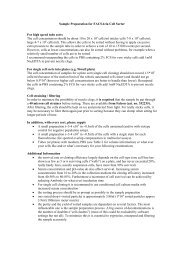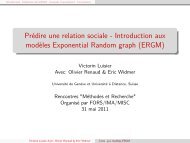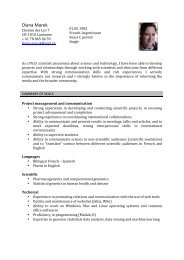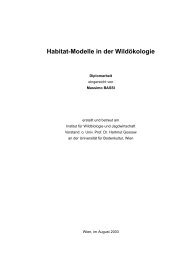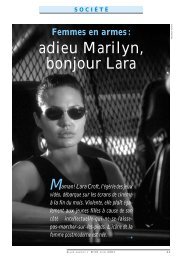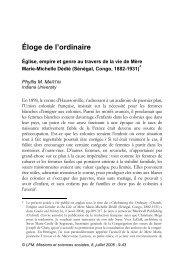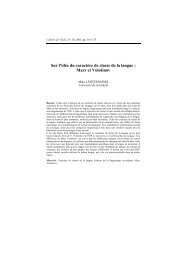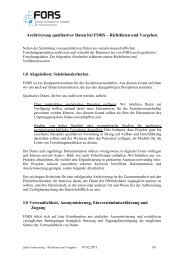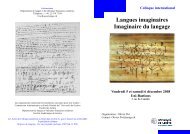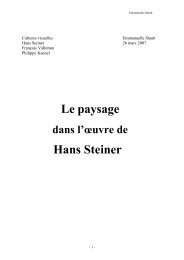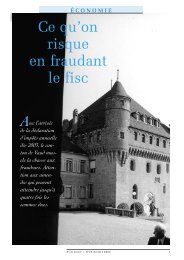conference programme book - European Survey Research ...
conference programme book - European Survey Research ...
conference programme book - European Survey Research ...
You also want an ePaper? Increase the reach of your titles
YUMPU automatically turns print PDFs into web optimized ePapers that Google loves.
THURSDAY 21 JULY 119rounds of ESSi: (1) post-straficaon; (2) analysis of reluctant respondents; (3). usingobservable data; and (4) esmang bias and adjustment using surveys amongnonrespondents. These four approaches on detecon and adjustment of non-response biasare used independently from each other and each approach has its own advantages anddisadvantages. The last approach applied propensity score straficaon method (10classes) on the basis of the informaon of co-operave respondents and non-respondents.3.2.3 Exploring use of informaon in paradata through calibraon method to detect and adjust nonresponseH. Matsuo 1 , J. Billiet 11 Katholieke Universiteit Leuven, BelgiumUnder the JRA2 ESSi <strong>programme</strong>, four approaches on detecon and adjustment of non-response bias are studiedusing different types of informaon such as populaon stascs, reluctant respondents, observable dataand non-response survey. Taking the perspecve of previous approaches, our focus of this paper is to exploresuitable informaon/variable for nonresponse bias detecon and adjustment. Based on the conceptual frameworkof survey cooperaon from Groves and Couper (1998), this paper firstly idenfies the type of informaonrecorded in the paradata, such as dwelling and neighborhood as well as contact procedure variables in rela-on to survey cooperaon, which is suitable for non-response detecon. Different types of respondents arecompared based on these paradata variables...3.2.4 The potenal of call record data to study nonresponse bias in the french survey on sexual behaviourN. Razafindratsima 1 , E. Morand 1 , S. Legleye 21 Instut Naonal d’Etudes Démographiques, France; 2 INED, FranceComputer assisted telephone interview (CATI) sowares used in telephone surveys oen provide, along withthe survey datafiles, a record of the historic of all contact aempts (such as date and status of the aempt:refusal, appointment, invalid number, acceptance, etc.). This informaon is nevertheless rarely used, partlydue to methodological issues concerning their stascal treatment.3.3 Randomized response methodology for sensive topicsTo be held on July 21, 2011 from: 09:00 to 10:30, in room 318.Coordinated by: Pier Francesco Perri - University of Calabria, Department of Economics and Stascs, Italy3.3.1 Making Use of ”Benford’s Law” for the Randomized Response TechniqueA. Diekmann 11 ETH, SwitzerlandIn my presentaon ”Benford’s law” is applied to the ”randomized response technique” (RRT) to increase thevalidity of answers to sensive quesons. Using the Newcomb-Benford distribuon as a randomizing devicehas several advantages. It is easy to explain and follow the procedure as no physical device such as a coin ora dice is necessary and the method guarantees full anonymity. As is well known, the price for the anonymityof the RRT is a decrease in the efficiency of the esmator. However, because of the subjecve overesmaonof certain numbers (”Benford illusion”), the conflict between the variance of the esmates and the degree ofanonymity is less pronounced compared to other RRT methods. Making use of Benford’s law improves theefficiency of the esmator for any given level of anonymity.



